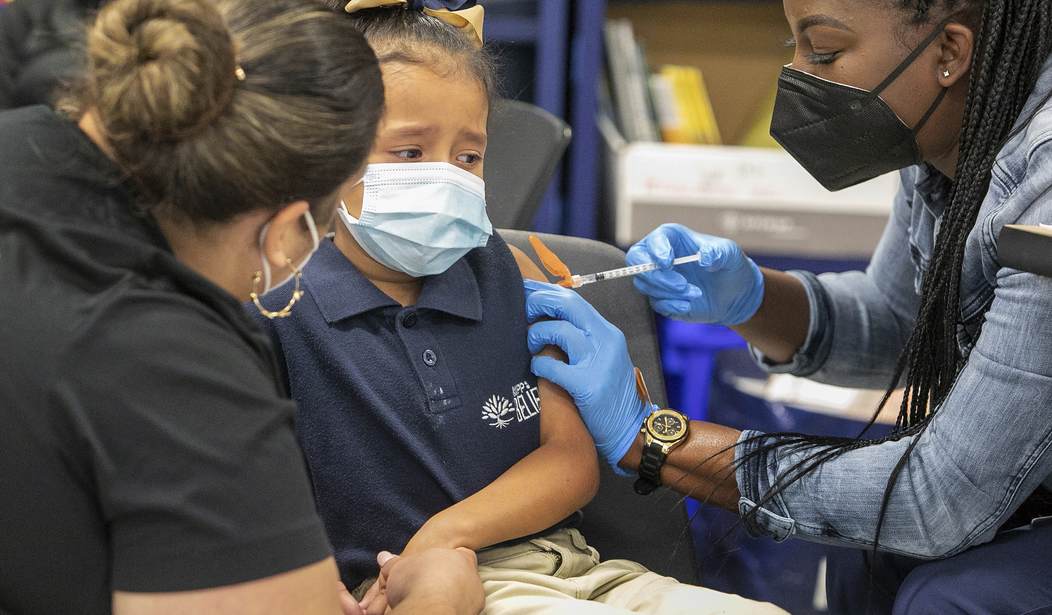The biggest question of the pandemic for the U.S. right now: Will Hot Vax Summer 2.0 be even shorter than Hot Vax Summer 1.0 was?
Because Hot Vax Summer 1.0 lasted around three weeks last May, as I recall, before Delta decided that was enough normalcy for awhile.
If you want to see how insanely quickly Omicron’s descendants are evolving into increasingly fitter strains, feast your eyes on this new CDC data. In early March, the original Omicron was dominant; within a month, it had been outcompeted by BA.2; within six weeks of that, BA.2 had been outcompeted by BA.2.12.1. And now we’re probably a month away from seeing BA.2.12.1 outcompeted by BA.4 and BA.5, represented here by the two green bars in the lower right-hand corner.

Combined, the two new subvariants represent 13 percent of all U.S. cases, up from 7.5 percent a week ago — a strong hint that they’re more contagious than BA.2.12.1. Because there’s so much vaccine immunity and natural immunity across the population, one would also assume that BA.4 and BA.5 are better at puncturing that immunity than previous variants given that they’re succeeding at (re)infecting people. And that assumption would appear to be correct. Initial studies in South Africa show that “BA.4 and BA.5 can elude the immunity of patients who were infected with the BA.1 strain,” Science magazine reported recently, dubbing the two subvariants “masters of immune evasion.”
So, that’s what we have to look forward to this summer.
But there is some good news. (Good, not great.) Moderna and Pfizer are at work on updating their vaccines and the first data from the clinical trials is in. Moderna reports that its new Omicron-specific shot produced 1.75 times more antibodies in recipients than its original shot based on the Wuhan virus did. A “bivalent” vaccine based on both Omicron and the Wuhan virus also produced higher antibodies than the initial vaccine. The footnote to that good news, though, is that no one’s sure yet how well the Omicron shot will protect against BA.4 and BA.5. Logically, since some people who were infected by Omicron have been reinfected by BA.4 or BA.5, it may be that a shot based on Omicron might not provide optimal protection against the new subvariants.
Moderna is studying that question but the early data points to it being a problem:
Moderna did not release any data on how the updated vaccine worked against BA.4 or BA.5. In a presentation Wednesday morning, Dr. Stephen Hoge, the firm’s president, said researchers were still gathering data on those and other subvariants.
But he said that a very small sample, together with isolated other studies, suggested that the levels of neutralizing antibodies triggered by the updated vaccine were two to threefold lower against the BA.4 and BA.5 subvariants, compared to against Omicron.
One researcher told the Times that the fact that the new shot produces 1.75 times as many antibodies as the first is itself an underwhelming result, raising the question of whether it’s worth the trouble of updating the vaccines to target Omicron at all. But the core problem is that Omicron and its lineages are evolving faster than humans can develop and produce new vaccines. Even if Pfizer and Moderna were to turn around and tailor their shots to BA.4 and BA.5 instead, by they time they reach the market this fall BA.10 and BA.11 may already be dominant in the U.S.
In the near term, in other words, we probably shouldn’t expect game-changing results from the modified shots. They might continue to reduce a recipient’s risk of severe illness and death, which would be great, but there’s no reason at the moment I’m aware of to think they’re going to slash people’s risk of getting infected.
There’s more good news, though — and this really might qualify as “great.” BA.4 and BA.5 have been circulating in South Africa for awhile, with predictable effects given how contagious they are:

That country was blasted by Omicron in December, spreading immunity throughout South Africa, but it still saw a meaningful wave over the past month thanks to the new immune-evasive subvariants.
However, the fact that there was a big surge in cases didn’t mean there was a big surge in deaths. Behold:

Cases during the latest wave reached about a third of the peak of cases over the winter. Deaths, on the other hand, are hovering at around one-seventh of the winter peak. Whether due to immunity or the new subvariants being intrinsically less virulent (or both), BA.4 and BA.5 aren’t killing huge numbers of South Africans. Hopefully the same will be true of our coming wave.
I’ll leave you with Scott Gottlieb raising another important question. Being infected with the original Omicron doesn’t seem to provide much immunity from BA.4 and BA.5, but what about if you’re infected with BA.2 or BA.2.12.1, the more recent subvariants? The northeast just went through a wave from those and their numbers are now declining. If BA.4 and BA.5 explode in other regions but remain mild in the northeast, that’ll be a clue that the older subvariants do offer some immunity against the newer ones even if the original Omicron fails to.
CDC says BA.4, BA.5 represent high percentage of cases in region that includes Texas, New Mexico, Oklahoma, Arkansas, Louisiana; but much lower in northeast which had big BA.2 wave. Question now: Can BA.4, BA.5 become dominant in places with big BA.2 wave https://t.co/LetSwqmAcu
— Scott Gottlieb, MD (@ScottGottliebMD) June 7, 2022









Join the conversation as a VIP Member